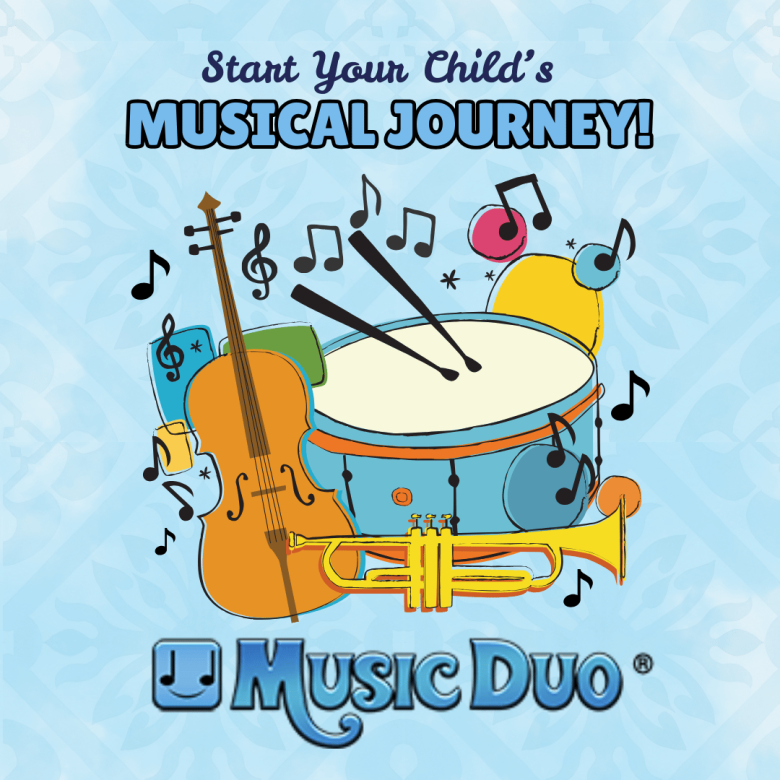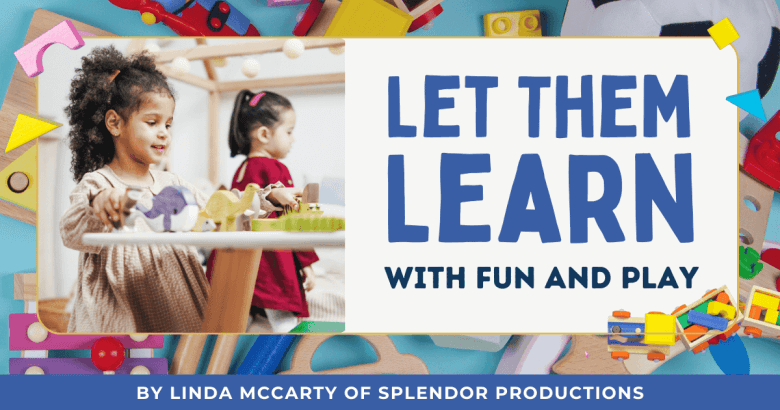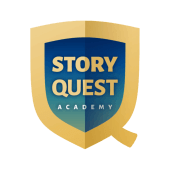By Linda McCarty of Splendor Productions
If you are having fun, you are not learning. This was prominently displayed in Miss Honey’s classroom, at least when Headmistress Miss Trunchbull came into the room in the movie Matilda.
Fortunately for me, my 6th grade science teacher did not subscribe to this philosophy. I remember looking forward to his class because he believed in active learning that felt “fun”.
We’d have weekly labs where, for example, we’d spend the whole hour testing out the friction of different objects going down an incline and monthly team objectives, like getting the entire class over an unseemingly high horizontal pole.
Now decades later, I’ve taken fun learning to all sorts of levels as an elementary music teacher. I personally think just singing is fun, but that is a subjective opinion.
Game-ify their learning experience!
I know I can show an animated vocal warmup, and every child thinks it’s just a fun activity. I can have the entire class play a game, and they think it’s just game time. I can put an instrument in each child’s hand, and they are having the time of their lives!
If I need to have students practice skills that are more likely to stick with repetition, I add a bit of healthy competition like Around the World to combat the tediousness of drills. Some teachers have a Minute challenge for students to prove mastery of a skill.
I think the trick to making learning fun is to create an activity that feels fun to the child while having a purpose to the activity. Let’s go back to the activities I mentioned above.
Fun Vocal Warmups
They are only 1 minute long, so it’s a short burst of “funness”.
Child’s perspective - Silly activity and some fun animation to watch.
Teacher’s perspective - Warming up the vocal cords, expanding their singing range, melodic contour practice for littles.
Singing Games
Singing a known song while playing a game, 2+ people.
Child’s perspective - Fun game!
Teacher’s perspective - Song is repeated many times to gain familiarity so that when a concept is presented later, it is already internalized through much repetition.
If played with several students (like in a co-op) and children get “out”, those students can rotate onto instruments, getting further experience with beat and percussion instrument playing.
Instruments
I have yet to find a child who doesn't want to play a percussion instrument.
Child’s perspective - Something to hold that makes some noise, evolving to becoming part of an ensemble, even if it is only their voice and the instrument they are playing.
Teacher’s perspective - several possible objectives:
- beat and/or rhythm get practiced
- Improvisation can occur
- Barred instruments (glockenspiels, xylophones)
- Mallet technique
- Chords (experienced or defined)
- Accompaniment experience (Who knows? They might accompany a choir on piano later in life.)
- Song composition
Game or song for repetitive practice
Child’s perspective - A challenge to improve time or beat a challenger or sing a catchy fun song that becomes a resource for them when needed.
Teacher’s perspective - Repetitive drills are sometimes just the most efficient way to get some information to stick like learning the note names in the treble or bass clefs.
Making Music Time Fun
I can’t forget procedures that just make music time fun. I always had a different helper each week who sat in a special spot, kept points for the class, received a sticker, and got to play with a toy for a few seconds at the end of class.
Decorating Your Classroom
I also decorated my room with a different theme for years until I finally settled on dragons. I’m not suggesting that you fill your living room with How to Train Your Dragon decor, but you might be able to find a corner for one subject that needs a bit more love and enticement.
Use These Tips Cross-Curricular!
Note that all of these suggestions can be used cross-curricular. Need to work on math facts? Create a “Minute” challenge where your child tries to answer as many problems (addition, subtraction, multiplication, division…) in a minute.
Does your child cave under that pressure? Take a known song, steal the melody from it, and create some verses that help with retention of facts. And they don’t have to rhyme!
I’ve used the song Great Big House and inserted 4 multiplication problems after each time.
The song has NOTHING to do with multiplication, but I say “5 X 5 is _____” rhythmically and students usually answer back rhythmically too. “5 X 6 is _____”, 5 X 7 is ______”, 5 X 8 is _______”.
Then we gleefully sing the song again and I come up with 4 more problems, depending on the level I think is appropriate for those students.
Use Your Imagination
As the parent and your child’s teacher, you know best what your child thinks is fun and what areas he or she needs to learn or improve upon.
If you combine the two, you will have a delightful time with them, your child will enjoy learning, and it’s clearly a win-win.
Whether it’s through song, play, or a little healthy competition, learning can—and should—be a joyful adventure. So why not let the fun begin?
As a musicologist once said:
“Since the beginning of time, children have not liked to study. They would much rather play, and if you have their interests at heart, you will let them learn while they play.”
— Carl Orff

Start Your Child’s Musical Journey with a Free 14-Day Trial! Partner with Music Duo to help your child embark on a path to music literacy through fun folk songs, percussion instruments, movement, and games.
Read More!
- Log in to post comments







